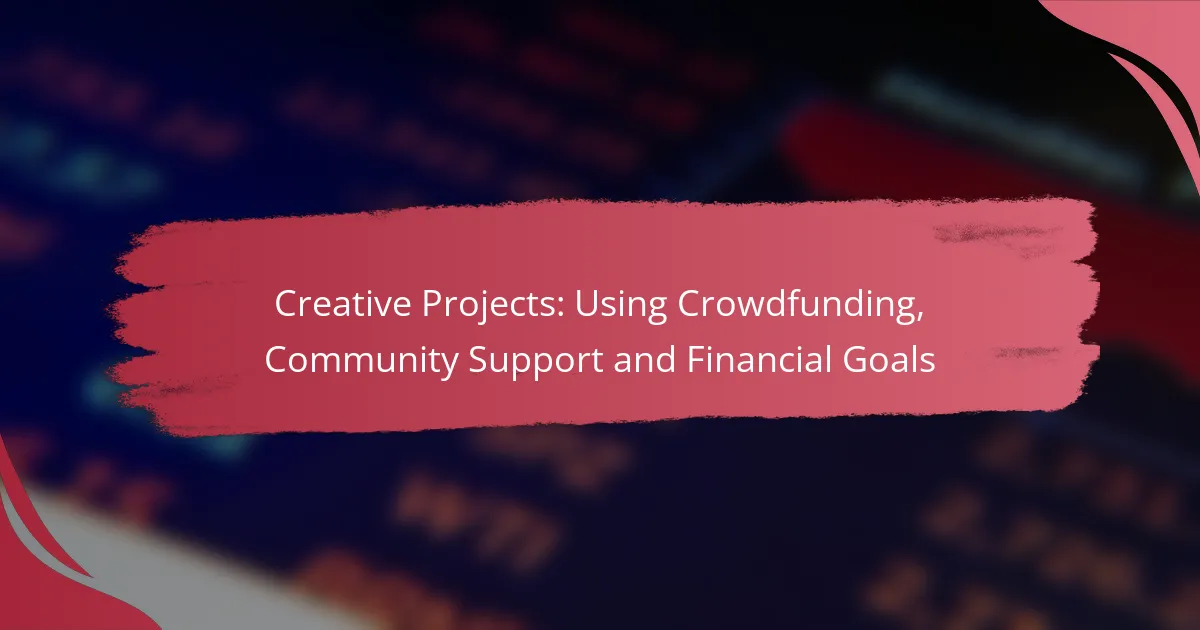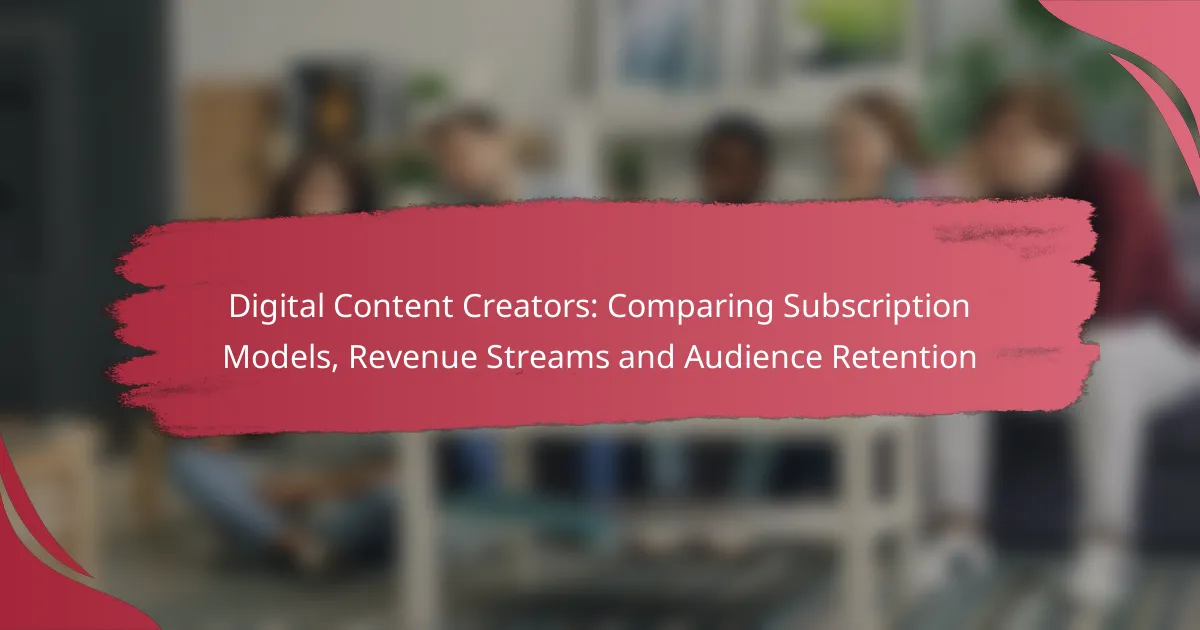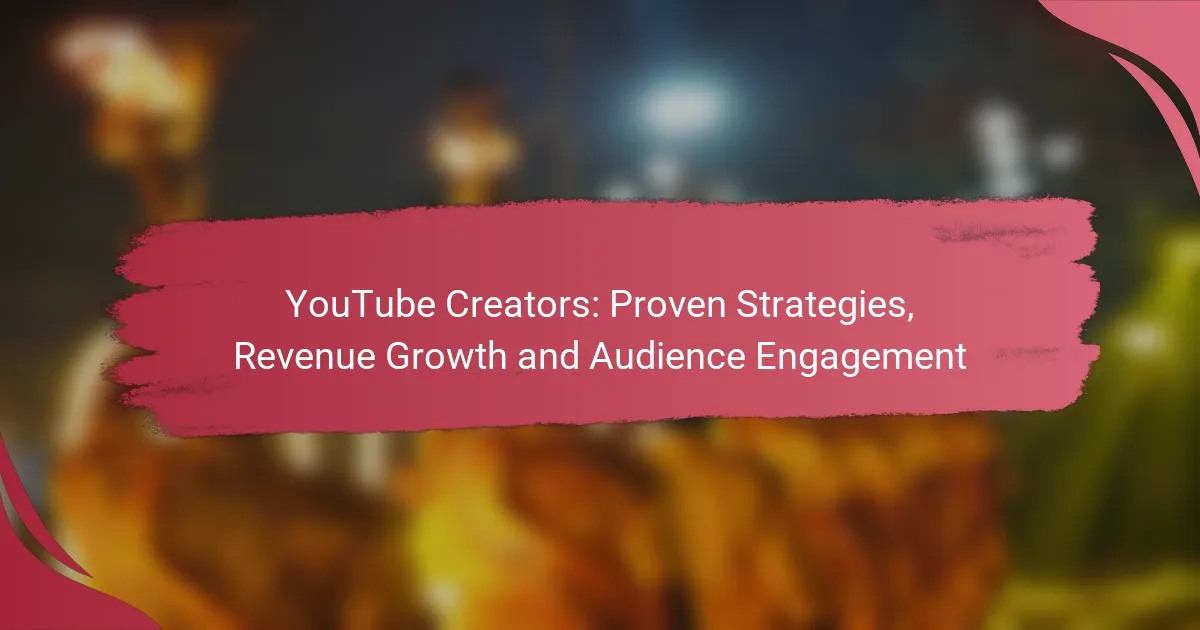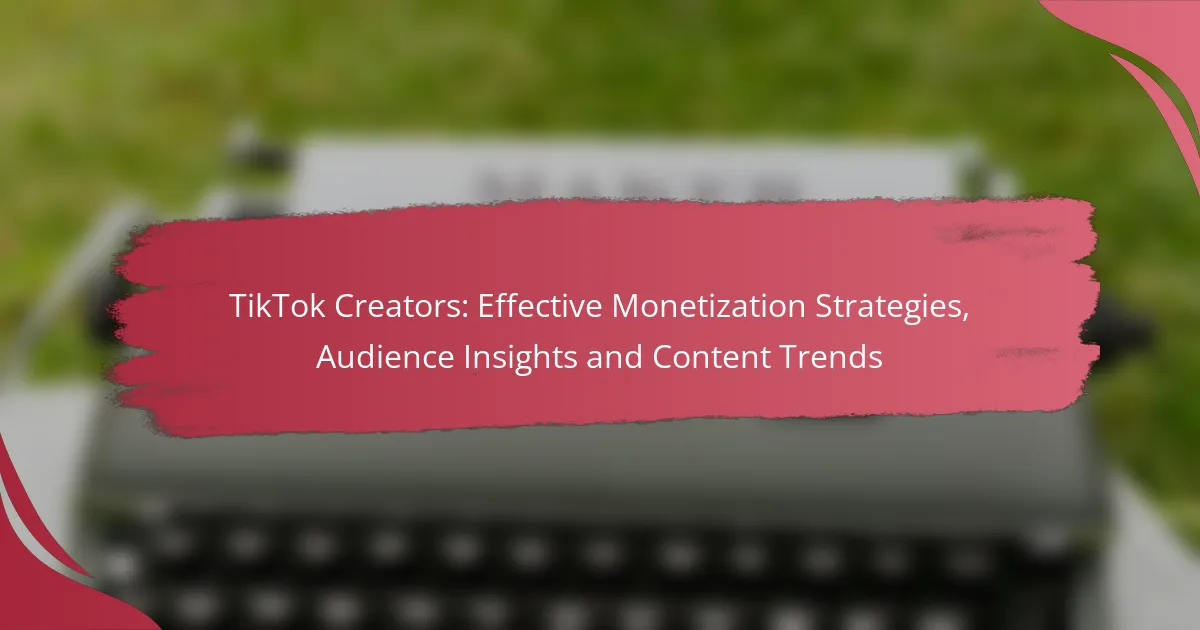Creative projects can thrive through the power of crowdfunding, which allows creators to secure financial backing directly from their supporters. By engaging the community, these projects not only gain essential funding but also build loyalty and visibility, enhancing their chances of success. Setting clear financial goals is vital, as it helps guide project planning and ensures that resources are effectively allocated to bring the vision to life.
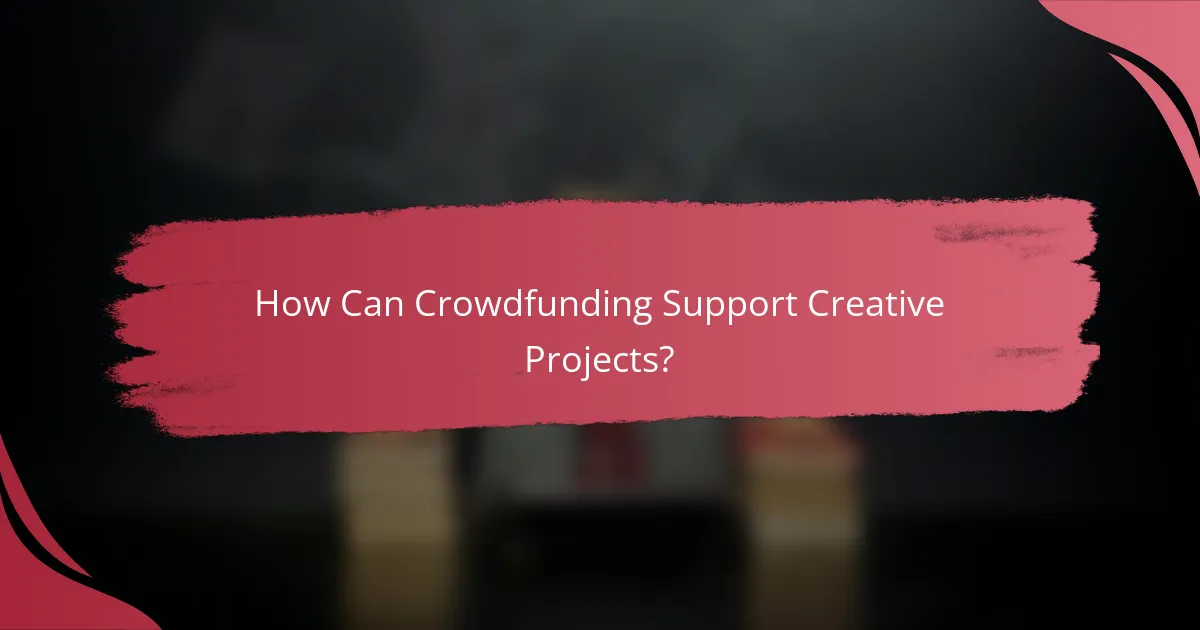
How Can Crowdfunding Support Creative Projects?
Crowdfunding can significantly boost creative projects by providing financial resources directly from supporters. This method allows creators to gather funds from a large audience, often in exchange for rewards or early access to products, enabling them to realize their visions without relying solely on traditional financing methods.
Popular platforms like Kickstarter
Kickstarter is one of the most recognized crowdfunding platforms, focusing on creative projects such as art, music, and technology. Creators set a funding goal and a deadline; if they reach their goal, they receive the funds, but if not, no money is collected. This all-or-nothing model encourages backers to contribute, knowing their funds will only be used if the project is fully funded.
When using Kickstarter, it’s essential to create an engaging campaign page with a compelling video and clear descriptions. Offering attractive rewards can also motivate potential backers to support your project.
Indiegogo for flexible funding
Indiegogo offers a more flexible approach to crowdfunding, allowing creators to choose between fixed and flexible funding options. With fixed funding, similar to Kickstarter, the project must meet its goal to receive any funds. However, with flexible funding, creators can keep whatever amount they raise, even if they fall short of their target.
This flexibility can be advantageous for projects that may still benefit from partial funding. It’s crucial to clearly communicate your project’s needs and how funds will be used, regardless of the funding model chosen.
Patreon for ongoing support
Patreon provides a platform for creators to receive ongoing financial support from their fans through subscription-based funding. This model allows artists, writers, and other creators to build a steady income stream by offering exclusive content or perks to subscribers.
To succeed on Patreon, creators should consistently deliver value to their patrons and engage with them regularly. Setting clear tiers of support can help potential patrons understand what they will receive at different contribution levels.
Success stories of funded projects
Many successful projects have emerged from crowdfunding, showcasing its potential. For example, the Pebble smartwatch raised millions on Kickstarter, demonstrating the power of community backing for innovative ideas. Similarly, the film “Veronica Mars” was funded through Kickstarter, allowing fans to directly support a project they were passionate about.
These success stories highlight the importance of a well-crafted campaign and the ability to connect with an audience. Learning from these examples can provide valuable insights into effective crowdfunding strategies and the types of projects that resonate with backers.
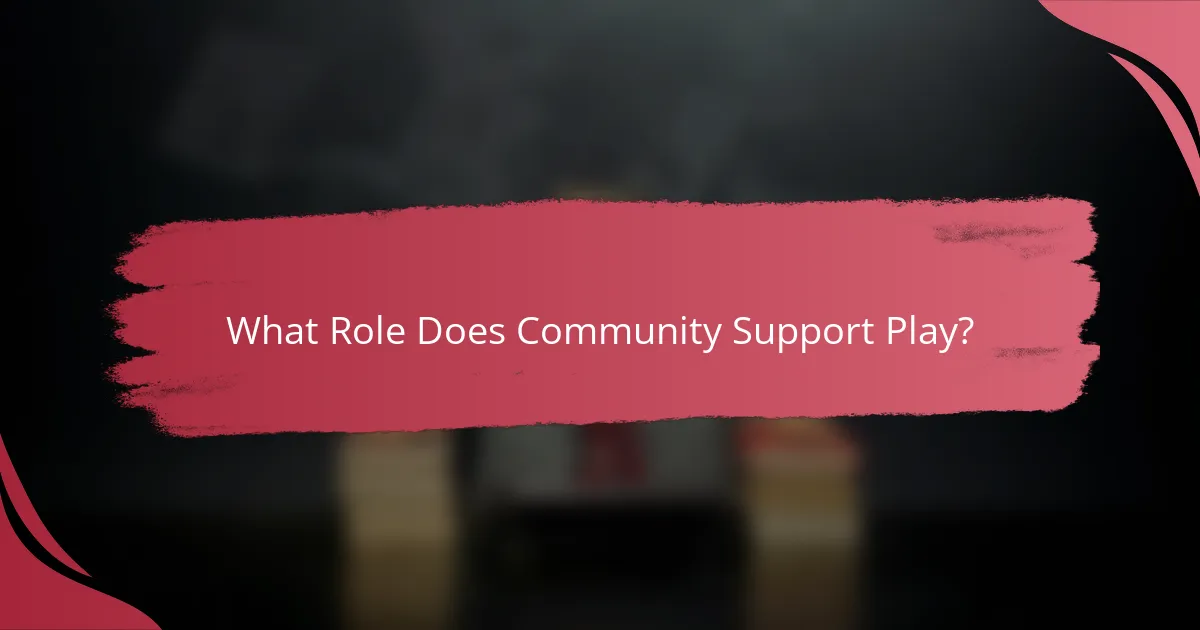
What Role Does Community Support Play?
Community support is crucial for creative projects as it fosters engagement, builds loyalty, and enhances funding opportunities. When a project has a strong backing from its community, it can lead to increased visibility and financial success.
Building a loyal audience
Creating a loyal audience involves consistently delivering value and engaging with supporters. This can be achieved through regular updates, exclusive content, and personalized interactions, which help to establish trust and commitment.
Consider offering early access to projects or special rewards for community members. This not only incentivizes support but also encourages word-of-mouth promotion, expanding your reach.
Engaging through social media
Social media platforms are powerful tools for engaging with your community. Regular posts, live Q&A sessions, and interactive content can keep your audience informed and invested in your project.
Utilize platforms like Instagram, Facebook, or Twitter to share behind-the-scenes content and solicit feedback. This two-way communication strengthens community ties and can lead to increased support during crowdfunding campaigns.
Collaborative events and workshops
Hosting collaborative events and workshops can deepen community involvement. These gatherings provide opportunities for supporters to connect with each other and the project creators, fostering a sense of belonging.
Consider organizing local meetups or online workshops that allow participants to contribute ideas or skills. This not only enhances the project but also builds a network of advocates who are more likely to support your financial goals.
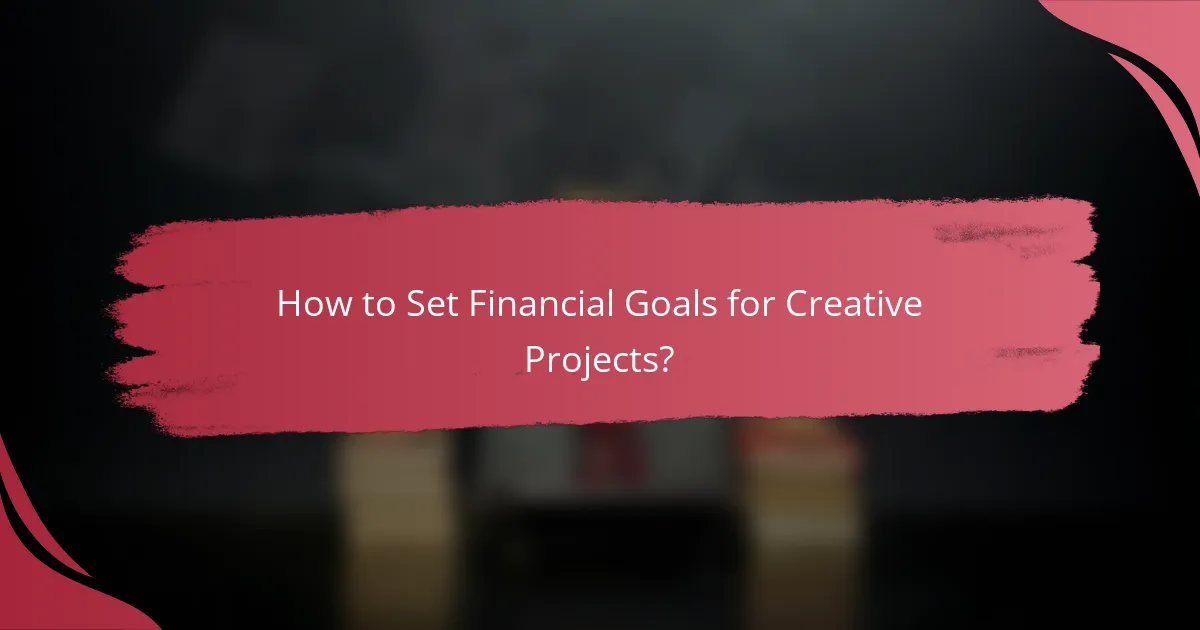
How to Set Financial Goals for Creative Projects?
Setting financial goals for creative projects involves determining how much funding is needed and how it will be allocated. Clear financial objectives help guide your project planning and ensure you have the resources necessary to succeed.
Defining project budgets
Defining a project budget is crucial for managing costs effectively. Start by listing all potential expenses, including materials, labor, marketing, and any other overheads. A well-structured budget should categorize these costs and provide a total estimate, ensuring you have a clear financial picture.
Consider using a simple spreadsheet to track your budget. This allows for easy adjustments as project needs evolve. Aim to include a buffer of around 10-20% for unexpected expenses, which is common in creative endeavors.
Estimating funding needs
Estimating funding needs requires a thorough understanding of your budget and project scope. Calculate the total amount required by summing all budgeted expenses and any additional costs that may arise during the project lifecycle. This figure will guide your fundraising efforts.
Research similar projects to gauge typical funding amounts in your creative field. For instance, small creative projects might need anywhere from a few hundred to several thousand dollars, while larger initiatives could require tens of thousands. This context can help you set realistic targets.
Setting realistic timelines
Setting realistic timelines is essential for achieving your financial goals. Break your project into phases and assign a timeframe to each phase, considering the time needed for fundraising, production, and delivery. This helps in aligning your financial goals with project milestones.
Be mindful of potential delays and build in extra time for each phase. A common approach is to add 20-30% more time than initially estimated to account for unforeseen challenges. This will help maintain momentum and keep your project on track financially.
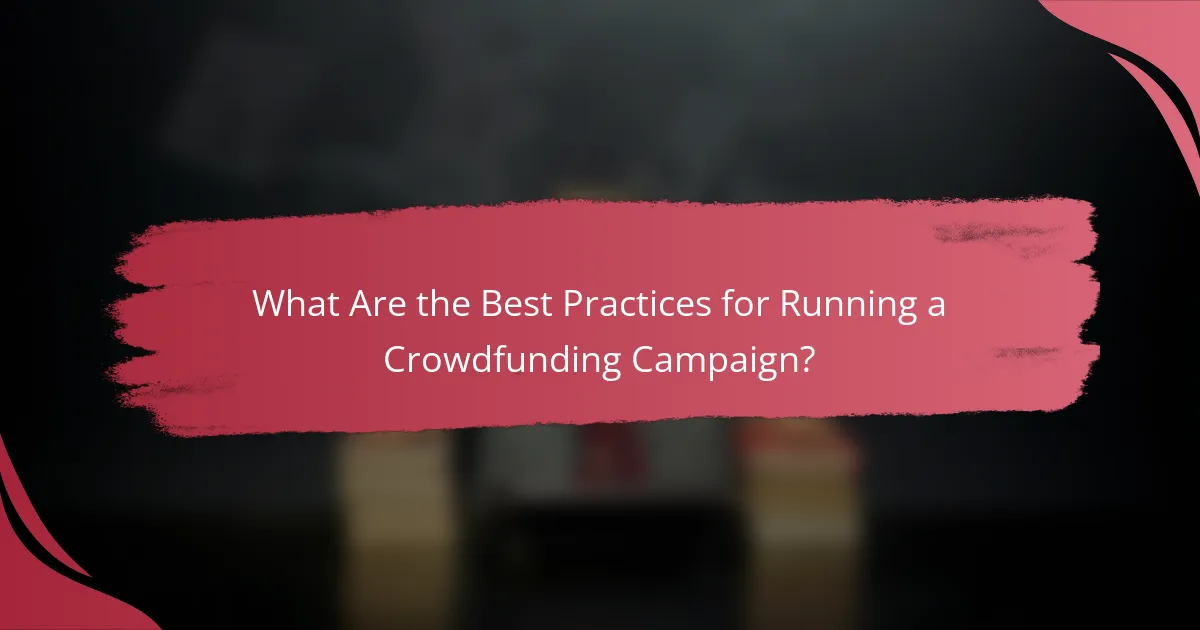
What Are the Best Practices for Running a Crowdfunding Campaign?
Successful crowdfunding campaigns rely on clear strategies that engage potential backers and meet financial goals. Key practices include crafting compelling narratives, utilizing engaging video content, and offering appealing rewards to attract support.
Creating compelling project descriptions
A compelling project description is essential for capturing the interest of potential backers. Clearly outline your project’s purpose, the problem it addresses, and how it will make a difference. Use storytelling techniques to create an emotional connection and convey your passion.
Be specific about your goals, budget, and timeline. Transparency builds trust, so include details about how funds will be used. Consider using bullet points for key information to enhance readability.
Utilizing video content effectively
Video content can significantly boost engagement in your crowdfunding campaign. A well-produced video should succinctly explain your project, showcase its uniqueness, and introduce yourself or your team. Aim for a length of around 2-3 minutes to maintain viewer interest.
Incorporate visuals that illustrate your project’s impact and include testimonials if possible. High-quality production values can enhance credibility, but authenticity is key; a genuine presentation often resonates more than a polished but impersonal one.
Offering attractive rewards
Attractive rewards can motivate backers to support your crowdfunding campaign. Consider offering tiered rewards that provide increasing value at different contribution levels. This could range from simple thank-you notes for small donations to exclusive merchandise or experiences for larger contributions.
Ensure that rewards are relevant to your project and appealing to your target audience. Research similar campaigns to gauge what types of rewards have been successful, and be mindful of the costs associated with fulfilling these rewards to maintain profitability.
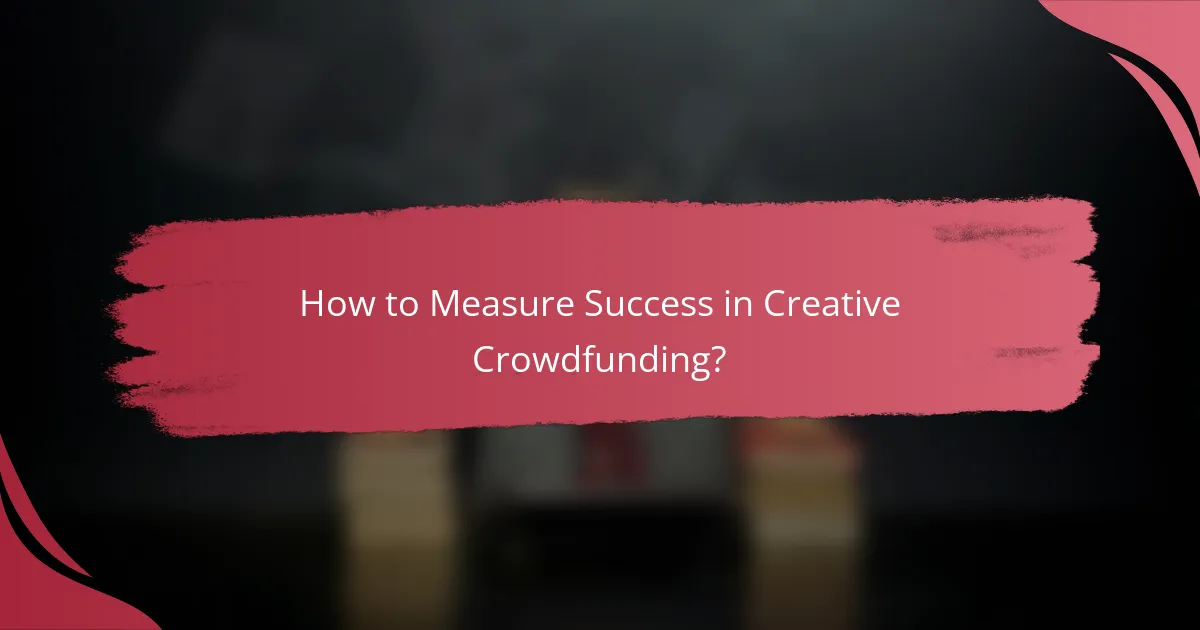
How to Measure Success in Creative Crowdfunding?
Success in creative crowdfunding can be measured through various metrics, including funding milestones, backer engagement, and project impact. Each of these factors provides insights into the effectiveness of a campaign and its ability to meet financial goals.
Tracking funding milestones
Tracking funding milestones involves monitoring specific financial targets throughout your crowdfunding campaign. Setting clear milestones, such as 25%, 50%, and 100% of your funding goal, helps gauge progress and maintain momentum.
Consider using a visual progress bar on your campaign page to show backers how close you are to reaching each milestone. This not only motivates potential backers but also encourages existing supporters to share your project with others.
Analyzing backer engagement
Backer engagement is crucial for understanding how well your campaign resonates with your audience. This can be measured through metrics such as the number of comments, shares on social media, and the frequency of updates from backers.
Engaging with your backers by responding to comments and providing regular updates can foster a sense of community. Tools like surveys can also help gather feedback to improve future campaigns and maintain interest throughout the project.
Evaluating project impact
Evaluating project impact involves assessing how well your creative project meets its intended goals and benefits the community or target audience. This can include qualitative feedback from backers and quantitative data on project outcomes.
Consider creating a post-campaign report that outlines the project’s achievements and any challenges faced. Sharing this information with backers not only demonstrates accountability but also builds trust for future projects.
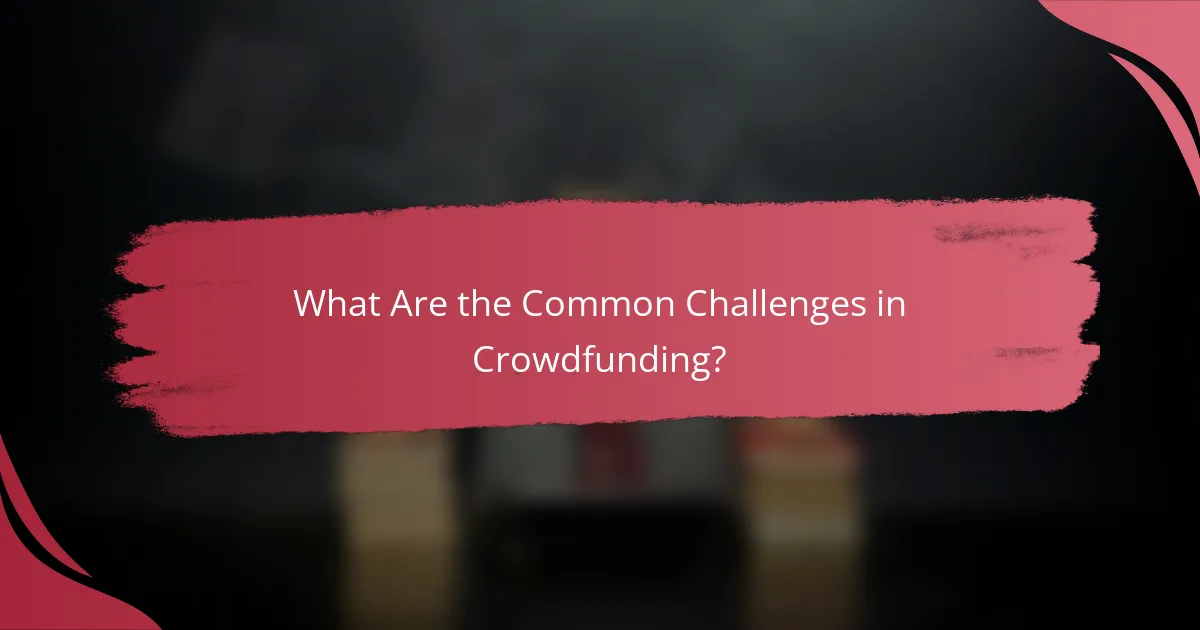
What Are the Common Challenges in Crowdfunding?
Crowdfunding presents several challenges that can hinder project success. Key issues include attracting backers, managing campaign expectations, and meeting financial goals while maintaining community engagement.
Attracting Backers
One of the primary challenges in crowdfunding is attracting backers to your project. This requires a compelling pitch, engaging visuals, and a clear value proposition. Utilize social media, email marketing, and community outreach to build awareness and interest.
Consider offering tiered rewards to incentivize different levels of support. For instance, a small donation might earn a thank-you note, while larger contributions could yield exclusive merchandise or early access to the product.
Managing Campaign Expectations
Setting realistic expectations is crucial for a successful crowdfunding campaign. Clearly communicate your project timeline, funding goals, and potential risks to backers. Transparency helps build trust and keeps supporters engaged throughout the process.
Regular updates on progress can help manage expectations and maintain interest. Consider using a project management tool to track milestones and share achievements with your backers.
Meeting Financial Goals
Meeting financial goals in crowdfunding requires careful planning and budgeting. Start by calculating the total amount needed for your project, including production costs, marketing, and platform fees. Aim for a funding target that covers these expenses while remaining achievable.
Monitor your campaign’s performance closely and adjust your strategy if necessary. If you’re falling short, consider running targeted ads or reaching out to influencers to boost visibility and attract more backers.
